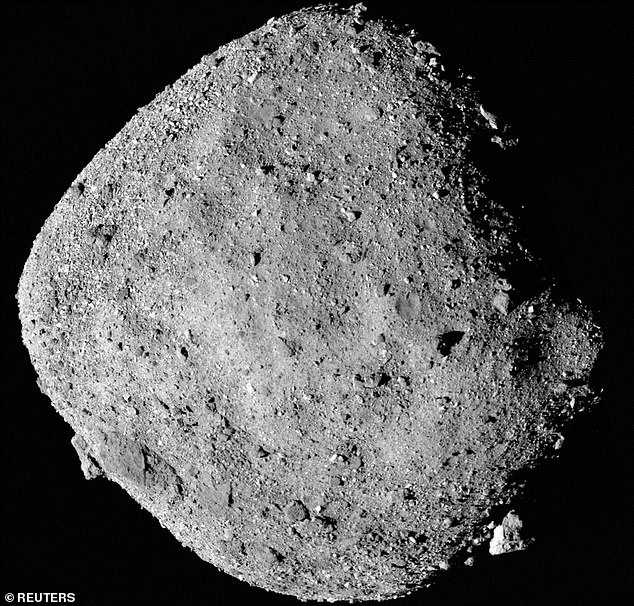Dust collected from an asteroid by a NASA spacecraft more than 200 million miles away from Earth contains material that is older than the sun.
Scientists have analysed samples from the Bennu asteroid, which resembles the Death Star space station in the Star Wars films, and found it is ‘chemically primitive’.
It contained ‘presolar grains’ which are stardust that formed around dying stars billions of years ago.
The samples provide a glimpse into the outer Solar System during the birth of the sun and are more pristine than any meteorite on Earth, according to a team of researchers.
NASA spacecraft Osiris Rex briefly touched the surface of Bennu with a robotic arm and collected 120g of material which was put into a capsule before it returned to earth in 2023.
Scientists have now pieced together the asteroid’s origins going back over 4.5billion years.
Professor Jessica Barnes, of the University of Arizona, who is one of the authors of the study, said: ‘Our data suggest that Bennu’s parent asteroid formed in the outer parts of the solar system, possibly beyond the orbit of Saturn.’
The chemical analysis of the asteroid sample found a mixture of other material including organic matter from the outer Solar System and the interstellar medium which is gas and dust between star systems.

Scientists have analysed samples from the Bennu asteroid (pictured), which resembles the Death Star space station in the Star Wars films, and found it is ‘chemically primitive’

NASA spacecraft Osiris Rex (pictured returning to Earth from space in September 2023) briefly touched the surface of Bennu with a robotic arm and collected 120g of material which was put into a capsule before it returned to earth in 2023

The samples provide a glimpse into the outer Solar System during the birth of the sun. Pictured: The Osiris Rex sample collector in 2023 with material from the Bennu asteroid
It also discovered high temperature materials which are believed to have formed near the sun before it drifted outwards.
Professor Sara Russell, planetary scientist at the Natural History Museum and another author of the study, said: ‘We’re looking at a unique snapshot of the outer Solar System at [the time of] the birth of our sun.
‘Some of these grains have survived billions of years of Solar System evolution almost untouched and can tell us more about the environment in which planets were born.’
The discovery paints a picture into the formation of our Solar System.
It comes after scientists announced earlier this year that it contained the building blocks of life.
This article was originally published by a www.dailymail.co.uk . Read the Original article here. .

